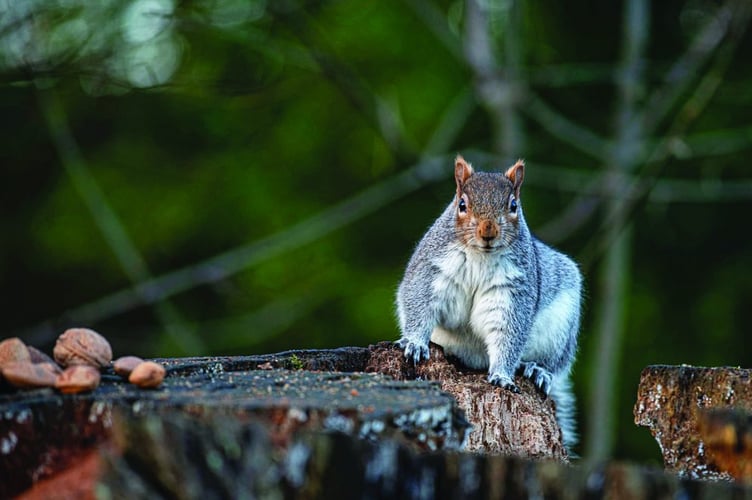HAVE you seen any wild mammals in your garden or local green spaces recently – from foxes to hedgehogs, and mice to squirrels? Perhaps you have just seen signs that they have visited, such as footprints and droppings.
If so, the People’s Trust for Endangered Species (PTES) would like you to report them. The wildlife charity is running its Living with Mammals survey starting this week and throughout the rest of 2021.
The trust saw record-breaking numbers of volunteers taking part in last year’s survey, thanks to more people being at home during the lockdowns and having the time to watch wildlife.
The result was a huge increase in the number of mammal sightings, from hazel dormice on birdfeeders to hedgehogs snuffling in gardens after dark. PTES says it sparked a new-found appreciation, love and interest in nature for many across the country.
PTES is keen to build on this positive relationship with nature made during the 2020 lockdowns, which not only benefits the UK’s wildlife but can also have a positive impact on the mental health and wellbeing of those taking part.
The trust is asking people to look out for and record sightings and signs throughout this year. Anyone in the UK can take part in Living with Mammals, by looking out for creaturesin gardens, allotments, parks and other green spaces. All sightings are valuable, it says.

David Wembridge, the PTES mammal surveys co-ordinator, explained: “Despite the challenges of 2020, one positive was the number of people seeing wild mammals more frequently, some for the first time.
Connections with nature are so important. Not only do we gain a unique insight into the lives of our wild neighbours, which is hugely beneficial for conservation, but wildlife watching and being close to nature is known to have a positive impact on our mental health too. This is needed now perhaps more than ever.”
More 2,000 people took part in the survey last year, which resulted in 2,400 submissions of results – two-and-a-half times more than in any other year. The top five species most commonly recorded were grey squirrels, hedgehogs, foxes, mice and bats.
Despite being in the top five, hedgehog sightings slightly dropped from last year, from 41% compared with 44% in 2019. However, the most striking result is the continued fall in reports of rabbits. In 2020, only 8.5% of sites surveyed saw a rabbit, compared with 13% in 2019 and about 25% a decade ago.
David said: “We launched Living with Mammals 18 years ago. The data gathered enables us to better understand how mammal populations are faring across the UK and where conservation action is needed. With access to this unique long-term database of population trends, we can spot when a species is in trouble and act.”
To take part in Living with Mammals 2021 – and find out how to identify different mammals, from pine martens to polecats – visit http://livingwithmammals.ptes.org. If you are on social media, PTES would love to see your mammal photos using #LivingWithMammals.




